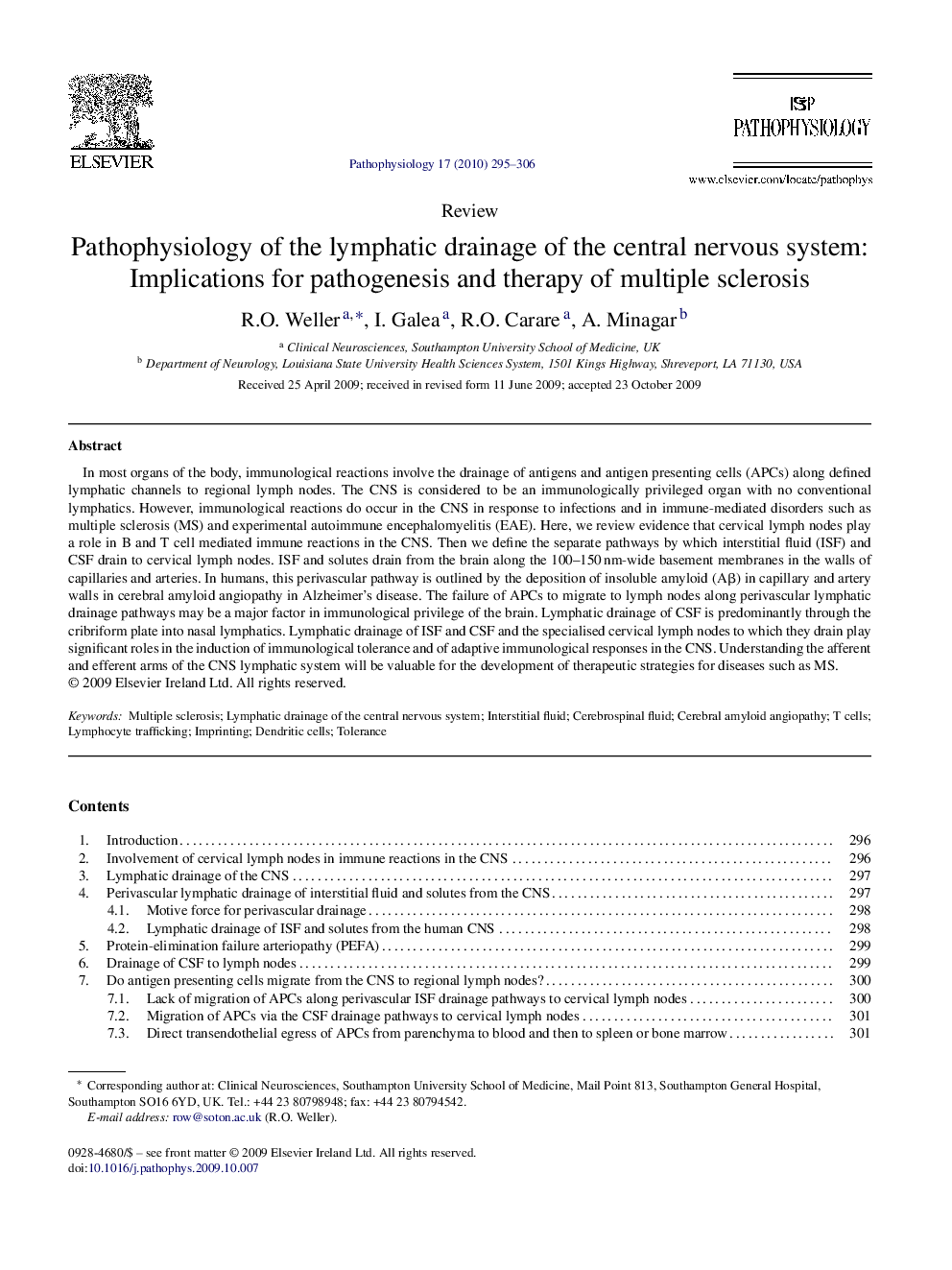| Article ID | Journal | Published Year | Pages | File Type |
|---|---|---|---|---|
| 4137333 | Pathophysiology | 2010 | 12 Pages |
In most organs of the body, immunological reactions involve the drainage of antigens and antigen presenting cells (APCs) along defined lymphatic channels to regional lymph nodes. The CNS is considered to be an immunologically privileged organ with no conventional lymphatics. However, immunological reactions do occur in the CNS in response to infections and in immune-mediated disorders such as multiple sclerosis (MS) and experimental autoimmune encephalomyelitis (EAE). Here, we review evidence that cervical lymph nodes play a role in B and T cell mediated immune reactions in the CNS. Then we define the separate pathways by which interstitial fluid (ISF) and CSF drain to cervical lymph nodes. ISF and solutes drain from the brain along the 100–150 nm-wide basement membranes in the walls of capillaries and arteries. In humans, this perivascular pathway is outlined by the deposition of insoluble amyloid (Aβ) in capillary and artery walls in cerebral amyloid angiopathy in Alzheimer's disease. The failure of APCs to migrate to lymph nodes along perivascular lymphatic drainage pathways may be a major factor in immunological privilege of the brain. Lymphatic drainage of CSF is predominantly through the cribriform plate into nasal lymphatics. Lymphatic drainage of ISF and CSF and the specialised cervical lymph nodes to which they drain play significant roles in the induction of immunological tolerance and of adaptive immunological responses in the CNS. Understanding the afferent and efferent arms of the CNS lymphatic system will be valuable for the development of therapeutic strategies for diseases such as MS.
